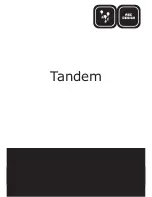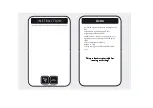
12
- 78
12.7 Special Register List
12
TROUBLESHOOTING
(2) System information
Table12.19 Special register
Number
Name
Meaning
Explanation
Set by
(When set)
Corresponding
CPU
SD150
I/O module
verify error
Bit pattern, in
units of 16
points,
indicating the
modules with
verify errors.
0: No I/O verify
errors
1: I/O verify
error present
• When I/O modules, of which data are different from those
entered at power-on, have been detected, the I/O module
numbers (in units of 16 points) are entered in bit pattern.
(Preset I/O module numbers set in parmeters when parameter
setting has been performed.)
• Not cleared even if the blown fuse is replaced with a new one.
This flag is cleared by error resetting operation.
S (Error)
QS
SD151
SD152
SD153
Table12.21 Special register
Number
Name
Meaning
Explanation
Set by
(When set)
Corresponding
CPU
SD200
Status of
switch
Status of CPU
switch
• The CPU switch status is stored in the following format.
S (Every END)
QS
SD201
LED status
Status of
CPU-LED
• The following bit patterns are used to store the statuses of the
LEDs on the CPU module:
• 0 is off, 1 is on, and 2 is flashing.
1): RUN
5): Empty
2): ERR.
6): Empty
3): USER
7): TEST
4): BAT.
8): Empty
S (Status
change)
SD203
Operating
status of CPU
Operating
status of CPU
• The CPU operating status is stored as indicated in the
following figure:
S (Every END)
b15 b14 b13 b12 b11 b10 b9 b8 b7 b6 b5 b4 b3 b2 b1 b0
0
0
0
0
0
0
0
0
0
0
0
0
0
SD150
0
0
0
0
0
0
0
0
0
0
0
SD151
0
0
0
0
0
0
0
0
0
0
0
SD153
0
0
0
0
Indicates an I/O module verify error
0
0
0
0
0
0
1
(
)
X Y
3E0
1
(
)
X Y
0
1
(
)
X Y
190
b15
b4 b3
b0
1)
Empty
to
to
1): CPU switch status
0: RUN
1: STOP
2: RESET
b15
b12b11
b8 b7
b4 b3
b0
1)
2)
4)
3)
5)
6)
8)
7)
to
to
to
to
b15
b12 b11
b8 b7
b4 b3
b0
1)
to
to
to
to
2)
1): Operating status
of CPU
0:
2:
2): STOP cause
0:
1:
2:
4:
RUN
STOP
Instruction in remote operation program
from RUN/STOP/RESET switch
Remote contact
Remote operation from GX Developer/
serial communication, etc.
Error
Note stores the above-mentioned factors from the smallest
number in priority to the largest one. However, "4:error" is treated
as the highest priority.
















































